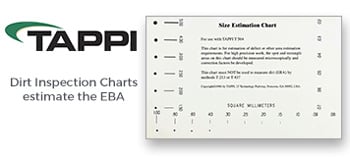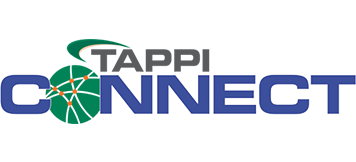Taking the sting out of OSHA HazCom compliance, Solutions!, Online Exclusives, April 2005, Vol. 88(4)
For years, corporate managers have struggled to comply with OSHA’s Hazard Communication Standard (HCS) regulations, and no wonder. According to OSHA, there are 650,000 hazardous chemical products in the U.S., and more than 30 million potentially exposed workers, with the HCS applying to over three million American workplaces.
“Employees have a right-to-know the hazards and the identities of the chemicals they are exposed to under the requirements of the HCS,” and “all in-plant containers of hazardous chemicals must always be labeled,” states OSHA in a March 2004 executive summary of Hazard Communication in the 21st Century Workplace. “The HCS remains a focus of OSHA enforcement efforts,” the brief continues. With more than 7,000 OSHA citations and over $1.3 million in penalties issued for HCS violations in 2003, making it the second most frequently cited standard, OSHA’s seriousness about enforcing the HCS is clear.
Automated systems save time
Fortunately, a growing number of corporate managers are discovering streamlined new methods of meeting OSHA’s HCS requirements, allowing them to not only improve the quality and consistency of their hazard communication labeling, Material Safety Data Sheets (MSDSs), and employee training, but also to significantly cut costs and boost efficiency, sometimes as much as 1,000%.
 One such system, the RTKV2 HazCom Chemical Labeling software with MSDS management and online database access, is rapidly replacing antiquated time and labor-intensive methods such as thumbing through safety catalogs, handwriting labels, and contacting manufacturers one-by-one to obtain current MSDSs. Offered by MaxiSoft (Somerset, Wisconsin), a leader in safety identification software and a subsidiary of K-Sun Corp., the RTKV2 HazCom labeling system is radically simplifying compliance for those responsible for HazCom safety.
One such system, the RTKV2 HazCom Chemical Labeling software with MSDS management and online database access, is rapidly replacing antiquated time and labor-intensive methods such as thumbing through safety catalogs, handwriting labels, and contacting manufacturers one-by-one to obtain current MSDSs. Offered by MaxiSoft (Somerset, Wisconsin), a leader in safety identification software and a subsidiary of K-Sun Corp., the RTKV2 HazCom labeling system is radically simplifying compliance for those responsible for HazCom safety.
“We turned to MaxiSoft when we realized they offer custom, compliant, instant labeling with an automated way to link and update the MSDS sheets,” says Andre Meacham, assistant director of loss prevention at Lagoon Corp., a 155-acre amusement/water park near Salt Lake City, Utah, with peak employment of 2,000 in summer. “With the chemicals in the database, it’s literally click and print. If OSHA were walking down the hall, I could print in time, if need be.”
Cutting through the MSDS quagmire
While printing RTK signs and labels of the appropriate size and content is key to complying with OSHA HCS regulation, doing so is often made immensely more difficult when having to update hundreds or perhaps thousands of MSDSs, often four to eight pages each, filled with obscure technical data, from which relevant labeling data may have to be distilled. Recently, Lagoon Corp. underwent a rigorous three-week, eight-hour-a-day OSHA inspection targeting HCS regulation, of which MSDSs were a critical aspect.
“OSHA scrutinized our hazardous communication material, our MSDSs, and our secondary container labeling with a fine-toothed comb,” says Meacham. “They inspected every back room, every cleaning closet.”
Meacham faced a daunting compliance project leading up to the OSHA inspection. The challenge was that nearly every employee—from those handling paints, pesticides, and lubricants to those tending food stands, games, and rides who used cleansers—came in contact with secondary containers that required HCS-compliant labeling as well as accessible, up-to-date MSDSs.
Lagoon Corp.’s prior system of labeling and hazard communication was burdensome, requiring individually handwriting voluminous data on each label: chemical names, reactivity, flammability, type of personal protection equipment, etc.—all done by hand for every label produced, and redone when an update was needed.
Even more disheartening was the prospect of reviewing more than a thousand MSDSs to see which chemicals were still used, and contacting the manufacturer to obtain the latest MSDSs by fax. The current MSDSs would then have to be read, and the pertinent info typed into a template, to be used for handwriting onto labels.
“Doing the labels and MSDSs by hand would have taken 12 to 18 months to finish, and we would have fallen out of compliance as soon as the data or chemical combinations changed,” explains Meacham. “It was like building a sand castle against the incoming tide.”
Rather than weed through volumes of MSDSs to decide which had to be updated and manually tracking down the necessary info, Meacham relied on MaxiSoft software with online access to 160,000 MSDS records. Downloadable to his computer for 24-hour access, and available by subscription, these MSDSs were continuously updated by the chemical manufacturers to ensure accuracy and compliance.
“With the system, I spend just one-tenth the time I would have spent handling labels and MSDSs, had I gone the traditional route,” says Meacham. “When I get calls requesting new or replacement labels, they’re printing before I hang up the phone. Thankfully, the days of hand writing labels or updating MSDSs by fax, company-by-company, are gone.”
To streamline the entire process and make preventive safety more achievable across his organization, Meacham took things a step further. Understanding that his workforce was tempted to ignore existing MSDSs due to their length and technicality, he asked MaxiSoft to extract the most relevant info for use in additional one-page, quick reference sheets for employees, available to them in the field with department-specific focus.
“Now that employees have only the most useful ‘right-to-know’ info at hand—such as first aid, personal protective equipment, spill containment, and reactivity with other chemicals—they are routinely referring to the quick reference sheets before starting new assignments,” explains Meacham. “We expect significant benefits down the road in terms of reduced injuries, claims, and workers comp.”
The immediate benefits of the entire HazCom labeling and MSDS software package, however, has been much more tangible: 100% OSHA compliance. “Any company seeking to comply with HCS regulations, with secondary container labeling or MSDS needs, should look into the program,” says Meacham. “I can’t imagine aiming for OSHA-compliance any other way.”
OSHA-compliant labels at your fingertips
While managing technical MSDSs is one necessary aspect of OSHA HazCom compliance, making the required signs and labels is still foremost in many safety managers’ minds. But getting the appropriate content, size, and other features right can be surprisingly difficult.
“Previously, we bought pre-made signs and labels and wrote on them with magic marker, which will fade, wear, or run if soap or solvent gets on them,” explains a safety specialist at a leading medical device manufacturer. “Finding the right content, in the right size and format, was difficult because catalog offerings seldom fit our specific needs.
“If we were lucky and the sign or label was in stock, getting it overnight cost as much in shipping as the item itself,” continues the safety specialist. “If it was a custom job, it could take a week or more to arrive, at higher cost, and we typically had to buy more than we wanted and store the rest. The logistics of researching, ordering, receiving, stocking, and keeping the items up to date was cumbersome—particularly because we have to re-label anytime a chemical composition changes, which is often.”
In his search for a better system of meeting HCS regulations, the safety specialist turned to MaxiSoft’s Windows-based software program, which allows him to print custom adhesive-backed labels and signs to match his existing formats, using his PC, printer and appropriate print media. With the software comes a database of the 1,300 most commonly used industrial chemicals, searchable not only by chemical name and synonym but also by UN, CAS, DOT, CHRIS, and STCC numbers for quick retrieval. The data is automatically sized, formatted, editable by mouse click, and applied to Right-to-Know labels.
“With the software in place, I get custom signs and labels as needed for just pennies on the dollar, all in a consistent format,” says the safety specialist. “I now have appropriate, durable signs and labels at my fingertips in far less time than it took to look through a catalog previously.
“Anyone in a dynamic business environment, where labeling, signage, or MSDSs are required on an ongoing basis will find the software an invaluable tool,” the safety specialist adds. “Compliance has never been easier.”
For more information:
For a free demo CD of MaxiSoft’s RTKV2 HazCom Chemical Labeling Software, call 800-522-2755, e-mail info@ksun.com or visit www.ksun.com on the Internet.
About the author:
Del Williams is a technical writer based in Torrance, California.





